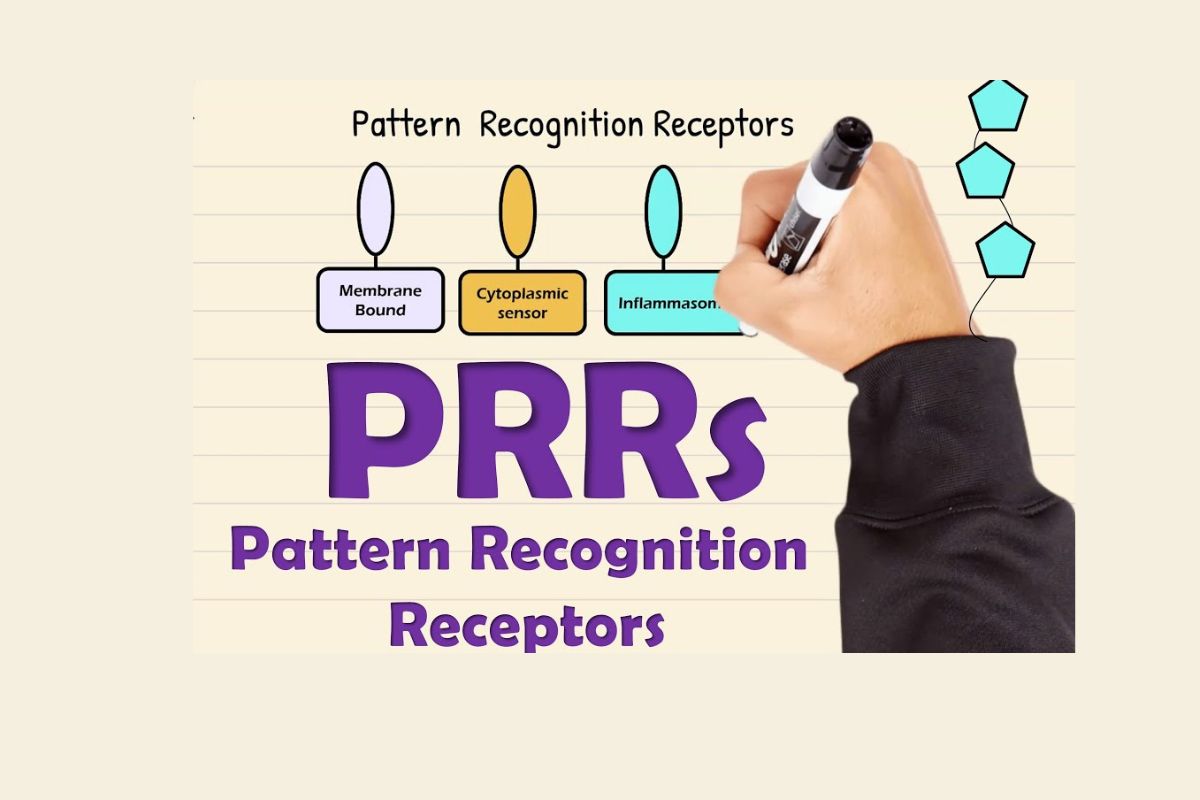
Pattern recognition receptors (PRRs) are crucial components of the immune system. They help identify pathogens like bacteria, viruses, and fungi. PRRs detect unique molecular patterns found on these invaders, triggering an immune response to fight off infections. Found on immune cells, such as macrophages and dendritic cells, these receptors play a vital role in maintaining health. Understanding PRRs can shed light on how our bodies defend against diseases and how certain conditions, like autoimmune disorders, arise. This article will delve into 26 fascinating facts about pattern recognition receptors, offering insights into their functions, types, and significance in immunology.
What Are Pattern Recognition Receptors?
Pattern recognition receptors (PRRs) are crucial components of the immune system. They help identify pathogens and initiate an immune response. Here are some fascinating facts about these vital proteins.
-
PRRs detect pathogens by recognizing specific molecular patterns known as pathogen-associated molecular patterns (PAMPs).
-
These receptors are found on the surface of immune cells like macrophages, dendritic cells, and neutrophils.
-
PRRs can also recognize damage-associated molecular patterns (DAMPs), which are molecules released from damaged or dying cells.
-
There are several types of PRRs, including Toll-like receptors (TLRs), NOD-like receptors (NLRs), and RIG-I-like receptors (RLRs).
Types of Pattern Recognition Receptors
Different types of PRRs play unique roles in the immune system. Each type has its own set of characteristics and functions.
-
Toll-like receptors (TLRs) are the most studied PRRs and are known for their role in detecting bacterial and viral components.
-
NOD-like receptors (NLRs) are found in the cytoplasm and are involved in recognizing intracellular pathogens.
-
RIG-I-like receptors (RLRs) detect viral RNA within the cytoplasm, triggering antiviral responses.
-
C-type lectin receptors (CLRs) are another group of PRRs that recognize carbohydrate structures on the surface of pathogens.
How PRRs Work
Understanding the mechanisms behind PRRs can shed light on how the immune system defends the body against infections.
-
When PRRs bind to PAMPs or DAMPs, they trigger signaling pathways that activate immune responses.
-
This activation leads to the production of cytokines, which are signaling molecules that help coordinate the immune response.
-
PRRs can also stimulate the production of antimicrobial peptides, which directly kill pathogens.
-
Some PRRs, like TLRs, can activate the adaptive immune system by promoting the maturation of dendritic cells.
Importance of PRRs in Health and Disease
PRRs play a significant role in maintaining health and can also be involved in various diseases.
-
Proper functioning of PRRs is essential for an effective immune response against infections.
-
Mutations or defects in PRRs can lead to increased susceptibility to infections.
-
Overactivation of PRRs can contribute to chronic inflammatory diseases, such as rheumatoid arthritis and inflammatory bowel disease.
-
PRRs are also involved in recognizing and responding to cancer cells, making them a target for cancer immunotherapy.
Research and Therapeutic Applications
Ongoing research on PRRs continues to uncover new insights and potential therapeutic applications.
-
Scientists are exploring ways to modulate PRR activity to enhance immune responses against infections and cancer.
-
PRR agonists, which activate PRRs, are being developed as vaccine adjuvants to improve vaccine efficacy.
-
Inhibitors of PRRs are being investigated as potential treatments for inflammatory and autoimmune diseases.
-
Understanding PRR signaling pathways can lead to the development of new drugs that target specific components of the immune response.
Interesting Facts About PRRs
Here are some additional intriguing facts about pattern recognition receptors that highlight their complexity and importance.
-
TLRs were first discovered in fruit flies, where they play a role in development and immunity.
-
Humans have 10 different TLRs, each recognizing distinct PAMPs.
-
Some PRRs can recognize and respond to environmental pollutants, linking them to conditions like asthma and allergies.
-
PRRs are not only found in humans but also in plants and other animals, indicating their evolutionary importance.
-
Research on PRRs has led to the development of new diagnostic tools for detecting infections and inflammatory diseases.
-
The study of PRRs has expanded our understanding of the immune system and opened new avenues for treating a wide range of diseases.
Final Thoughts on Pattern Recognition Receptors
Pattern recognition receptors (PRRs) play a crucial role in our immune system. They act as the body's first line of defense, identifying harmful pathogens and triggering immune responses. Without PRRs, our bodies would struggle to detect and fight infections effectively. These receptors recognize specific patterns found in pathogens, such as bacterial cell walls or viral RNA, and initiate a response to eliminate the threat.
Understanding PRRs helps researchers develop better treatments and vaccines. By studying how these receptors work, scientists can create therapies that enhance the immune system's ability to combat diseases. PRRs are essential for maintaining health and protecting against infections.
In summary, PRRs are vital components of the immune system, helping to identify and respond to pathogens. Their study continues to provide valuable insights into improving human health and developing new medical treatments.
Was this page helpful?
Our commitment to delivering trustworthy and engaging content is at the heart of what we do. Each fact on our site is contributed by real users like you, bringing a wealth of diverse insights and information. To ensure the highest standards of accuracy and reliability, our dedicated editors meticulously review each submission. This process guarantees that the facts we share are not only fascinating but also credible. Trust in our commitment to quality and authenticity as you explore and learn with us.
